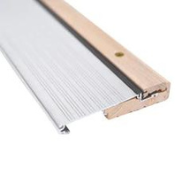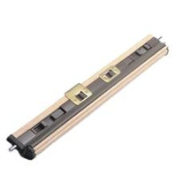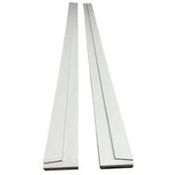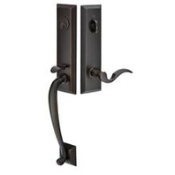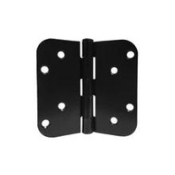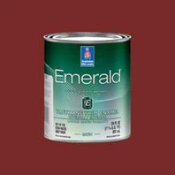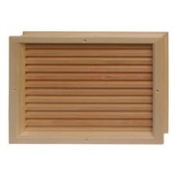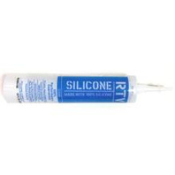
Solid wood front doors add charm and character to any home but need regular care to stay beautiful and strong. From cleaning to protecting against weather, there are many steps you can take to keep your door in top shape. This guide will walk you through everything you need to know about maintaining your wooden front door through every season.
Key Takeaways
- Regular cleaning prevents dirt buildup and maintains the solid wood front door appearance.
- Weather protection, like sealants and overhangs, safeguards your door from damage.
- Seasonal maintenance ensures your door withstands different weather conditions.
- Simple repairs, such as fixing scratches and dents, can extend the life of your door.
- Proper refinishing and painting protect the wood and enhance its look.
Cleaning techniques for different wood types
-
Basic cleaning techniques
When cleaning solid wood front doors, start with the gentlest cleaner and move to stronger ones if needed. A weak solution of water and dish soap works well for general cleaning. Dip a soft cloth in the solution and wipe the door circularly. Always test the cleaner on a small, hidden area first to ensure it doesn't damage the wood finish.
-
Dust and debris removal strategies
To remove dust and debris, use a barely damp microfiber cloth. This helps to pick up dust without scratching the surface. For sticky spots, add a drop of dish soap to the cloth. Avoid using harsh chemicals or abrasive materials that could strip or scratch the wood.
-
Dealing with mold and mildew
For mold and mildew, mix vinegar and water. Apply the solution with a soft cloth and gently scrub the affected areas. Rinse with a damp cloth and dry immediately with a clean towel. This method is effective and gentle on wood surfaces.
Protecting wood doors from weather damage
Solid wood front doors maintenance is crucial to keep your entryway looking great and functioning well. Weatherproofing wood doors can help protect them from the elements. Here are some tips to get you started.
-
Prepping your door for extreme weather conditions
As seasons change, extreme weather can harm your solid wood front doors. Preparation is key. You must protect your door from moisture, sunlight, and temperature changes. Here’s how:
- Check weather stripping: Replace if worn out.
- Apply sealant: Use a high-quality varnish or polyurethane.
- Inspect for cracks: Fill any gaps with wood filler.
- Overhang addition: Consider installing one for added protection.
-
Applying sealants and finishes
These products create a protective barrier against moisture, sun exposure, and other environmental factors that can damage the solid wood front doors. Before applying the sealer or finish, make sure the door is clean and free of any dust or debris. Follow the manufacturer’s instructions for application, and allow sufficient drying time before using the door.
-
Installing overhangs
Though solid wood front doors possess great strength and durability, they aren't immune to damage. Over time, the finish will fade or, if painted, chips and cracking in the top coat may appear. To restore the appearance of your entryway, you can apply a new protective coating. First, lightly sand the entire surface and wipe it down with a rag dampened with mineral spirits. Then, simply apply two or more coats of a fade-resistant finish or exterior paint with ultraviolet protection.
Seasonal maintenance tips
Taking care of your solid wood front doors throughout the year is essential for their longevity. Each season brings its challenges, so it's important to adjust your maintenance routine accordingly. Here are some seasonal door care tips to keep your door looking and functioning at its best.
-
Spring maintenance
Spring is the perfect time to clean off any pollen and debris that may have accumulated. Inspect your door for any water damage that might have occurred during the winter months. This is also a good time to check the weather stripping and seals to ensure they are still providing proper insulation.
-
Summer maintenance
During the summer, the sun can be particularly harsh on wood doors. Apply a UV-protectant layer to shield your door from sun damage. Also, check for any swelling due to the heat and address it promptly. Regular cleaning and dusting can help maintain the door's appearance.
-
Fall and winter maintenance
In the fall, clear away fallen leaves and dirt that can accumulate around your door. Prepare for cooler temperatures by inspecting and replacing any worn-out weather stripping. Winter can be especially tough on doors, so make sure to address any drafts or leaks. Applying an insulating oil can help keep your door in good shape during the colder months. Regularly inspect your door for damage post-summer and winter, and reapply protective finishes as needed.
Repairing and refinishing wood doors
-
Repairing Scratches and Dents

When it comes to repairing door scratches and dents, the first step is to clean the surface of the door to eliminate dust and other debris before performing any internal door restoration. Once the area is dry, sand it lightly to smooth out any rough spots. For deeper scratches or dents, use a color-matched wood filler. Apply the filler, let it dry, and then sand it down until it is flush with the rest of the door.
-
Sanding and Refinishing
The inaugural stride in reviving an external wooden door entails sanding. This ritual expunges erstwhile paint, varnish, and blemishes, priming the surface for a new finish. Start with 80-grit sandpaper to remove the bulk of old paint or varnish. Follow up with finer grits, such as 100-grit and then 120-grit, to smooth out the surface. Always sand in the direction of the wood grain to avoid scratches. After sanding, you can apply your chosen stain or paint. Make sure to apply a protective coat after staining or painting to keep your door looking fresh.
-
Painting Essentials
Before you start painting, make sure the door is clean and sanded. Use a primer if you're painting over bare wood or a dark color. Apply the paint in thin, even layers, allowing adequate drying time between coats. For a durable topcoat, consider using polyurethane. Be sure to allow adequate drying time between coats to ensure a smooth, long-lasting finish.
Fixing and refinishing wood doors can bring new life to your home. Whether it's a small scratch or a complete overhaul, our door experts are here to help. Visit Peasedoors to explore our range of products and get professional advice.
Conclusion
Taking care of your solid wood front doors doesn't have to be hard. With regular cleaning, weather protection, and seasonal maintenance, you can keep your door looking great for years. Remember to use gentle cleaners, check for damage, and apply protective coatings as needed. By following these simple steps, you'll not only enhance your home's curb appeal but also extend the life of your door. A well-maintained wood front door is a beautiful and lasting welcome to your home.
Frequently Asked Questions
1. How often should I clean my wood front door?
It's best to clean your wooden front door once a month to keep it looking its best. Regular cleaning helps prevent dirt buildup and damage.
2. What should I use to clean my wood door?
Use mild, non-abrasive cleaners and a soft cloth. Avoid using harsh chemicals or rough materials that can scratch the solid wood front doors.
3. How can I protect my wood door from weather damage?
Applying a good sealant and using weather stripping can help protect your door from moisture and temperature changes. Also, consider installing an overhang for extra protection.
4. What should I do if my wood door has scratches?
Minor scratches can be fixed with wood filler and a touch-up stain. For deeper scratches, you might need to sand and refinish the area.
5. How do I deal with mold and mildew on my wood door?
Mix a solution of water and mild detergent, and gently scrub the affected area. Make sure to dry the door thoroughly to prevent further mold growth.
6. When should I refinish my wood front door?
Refinishing is generally needed every 2-3 years, depending on the exposure to weather and the condition of the finish. Regularly check for signs of wear and reapply as needed.




